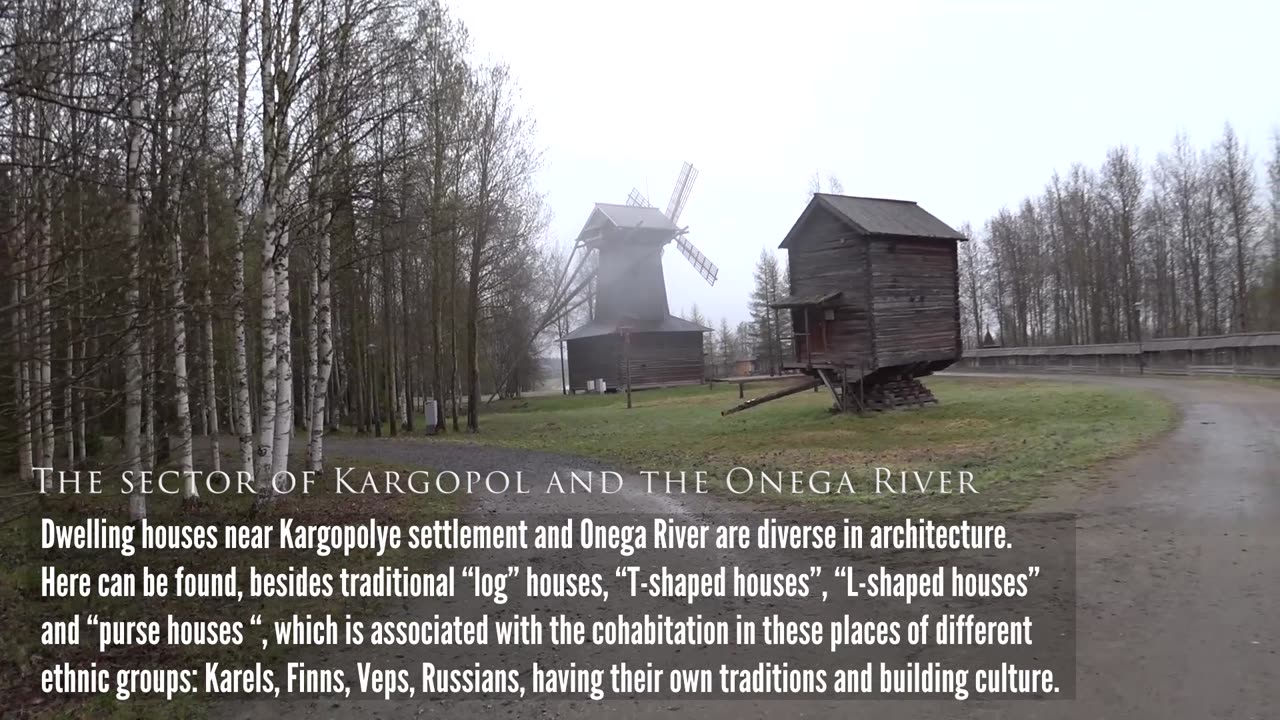Premium Only Content

How did Russians used to live in northern Russia?
The traditional wooden architecture was recognized at the time as one of the most characteristic features of the Russian North.
In the Arkhangelsk region, you can visit a unique place with unique examples of northern architecture dating back to the 17th century.
Rapid urbanization has led to the disappearance of many villages, so the idea of preserving wooden buildings arose during Soviet times.
At the end of the 1980s, some buildings, churches, chapels, and peasant houses, scattered all over the Arkhangelsk region, were put under state protection; as a result, a kind of open-air museum was organized, where you can see how the northern Russian villages in the distant past.
The goal of the village of Malye Korely is to save the most outstanding wooden monuments.
It's great that the creators of this open-air museum have provided each house with a sign with the name of its former owners, thus immortalizing the names of ordinary people who lived in rural Russia.
Malye Korely is currently divided into four sectors spread over 140 hectares of a rolling forested landscape.
1. The sector of Kargopol and the Onega River (00:56)
Dwelling houses near Kargopolye settlement and Onega River are diverse in architecture. Here can be found, besides traditional "log" houses, "T-shaped houses", "L-shaped houses" and "purse houses ", which are associated with the cohabitation in these places of different ethnic groups: Karels, Finns, Veps, Russians, having their own traditions and building culture.
2. The Dvina sector (04:11)
Houses in the Northern Dvina river basin are distinguished by their large size, height, proportionality, and expressiveness of individual details. A characteristic feature of the houses in the Dvina sector is the large roof overhangs over the central gable of the house, the mighty overhang supported by consoles.
3. The Pinega sector (07:36)
The Pinega sector reflects the architecture and life of the people who lived in the Pinega River basin, the largest tributary of the Dvina River. Wooden houses here are placed facing the sun. Here, in contrast to other regions of the Russian North, barns were located behind the village, forming a kind of barn streets or "towns". Pinega barns are placed on tall posts to prevent rodents from entering the premises. In the barn, peasants stored the most valuable - grain, festive, and winter clothes. The front wall of the barn has a canopy over the front wall, which serves as a shelter from rain and snow.
4. The Mezen sectors (08:07)
A characteristic feature of the Mezensk settlements is retaining walls because most of them are on high riverbanks. When the snow melts, as well as during intense floods, the clay soil is easily eroded, which can lead to the sliding of the ground. Therefore, in many villages, there is a need for additional reinforcement of river banks.
-
 1:15:41
1:15:41
Steve-O's Wild Ride! Podcast
21 hours ago $1.62 earnedBert McCracken: The Unlikely Godfather of Hardcore Music
5.43K -
 LIVE
LIVE
Midnight In The Mountains™
1 hour agoGaming w/ Midnight | Arc Raiders w/ SilverFox & Sgt Wilky | 11AM EST
50 watching -
 LIVE
LIVE
dieseldesigns
3 hours agoServer SLAM Appetizer Before RELEASE! // Arc Raiders
54 watching -
 19:20
19:20
Stephen Gardner
1 day ago🚨Trump's latest Marco Rubio ORDER LEAKED by New York Times!
86.9K128 -
 21:33
21:33
Liberty Hangout
2 days agoDemocrats Invite Me Over For Breakfast
11.7K50 -
 2:38:56
2:38:56
FreshandFit
16 hours agoShe Left Her Man To Find A HVM In Miami w/ 6IX9INE
376K162 -
 11:16
11:16
Blackstone Griddles
15 hours agoDouble Roasted Green Chile Smash Burger on the Blackstone Griddle
12.9K2 -
 14:36
14:36
Tactical Advisor
19 hours agoNew Military Thermal Target
19.2K2 -
 2:10
2:10
OfficialJadenWilliams
18 hours agoHow we treated AI in 2023 vs 2025
12.4K4 -
 9:02
9:02
The Shannon Joy Show
18 hours agoWhy is Canada PERSECUTING Dr. Makis
18.3K11